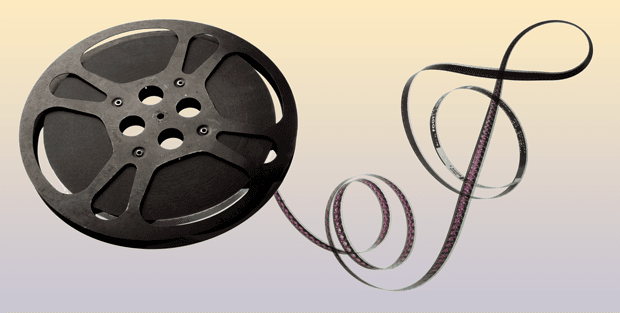Sounds for Silence
Students Create New Music for Silent Films
by Liam Farrell | movie stills Courtesy of Robert DiLutis | photo by John T. ConsoliWilliam Kenlon admits that the first time he watched “Chip the Wooden Man in ‘Candyland,’” he felt fear.
It wasn’t due to the content of the 1920s silent film, a surreal, 3.5-minute, stop-motion puppet tale of the titular Chip and his flying horse on a quest (with the assistance of a fairy and elf) to replace a distraught girl’s dropped candy. It’s what was missing—music accompaniment—and the fact that he had been tasked to write it.
“I wouldn’t have chosen to write a piece about a wooden cowboy,” says Kenlon, a UMD doctoral student in music composition. “What am I going to write that makes sense?” The finished product, a jaunty tune for a woodwind quintet, is part of Music + Film at the University of Maryland, a program that gives students a chance to arrange and write music for long-lost silent films. Now, with a new partnership with the Library of Congress, the students’ work will be preserved for posterity on the archive’s website.
The program was founded two years ago by music Professor Robert DiLutis and his wife, Pat Doyen, a film archivist, who saw an opportunity to reinvigorate moribund films with the creative power of college students.
Lots of material was filmed 100 years ago, says DiLutis, from chemical reactions to whimsical animations. But many scores for short movies have gone missing over time, and plenty more were just generic directions for theater piano players, calling for “sad” or “happy” music.
“We really look forward to hearing what the students come up with. It is amazing to see the creativity,” he says. “Most of what silent films do right now is sit on shelves.”
Students have performed their compositions with the movies before packed houses at the Clarice Smith Performing Arts Center. DiLutis says the program encourages an entrepreneurial spirit in music students who could find careers in less typical avenues, like composing soundtracks for video games.
“This is a totally different experience for them,” he says.
Kenlon found he had to operate within the constraints of a film—its time restrictions and imagery—rather than follow the flows of his own imagination. He says the writing process involved breaking down the action, matching instruments to characters and brainstorming melodies that complemented the narrative’s transitions.
“It was almost an athletic challenge,” he says. “It was nice to dip my toes in with this.”
The next edition of Music + Film at the University of Maryland will be held on Thursday, December 1. For more information, click here.
1 Comments
Leave a Reply
* indicates a required field


Jennifer
Very creative! Keep up the good work.